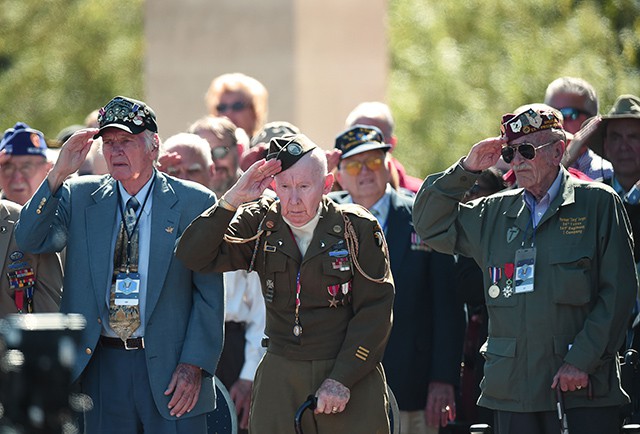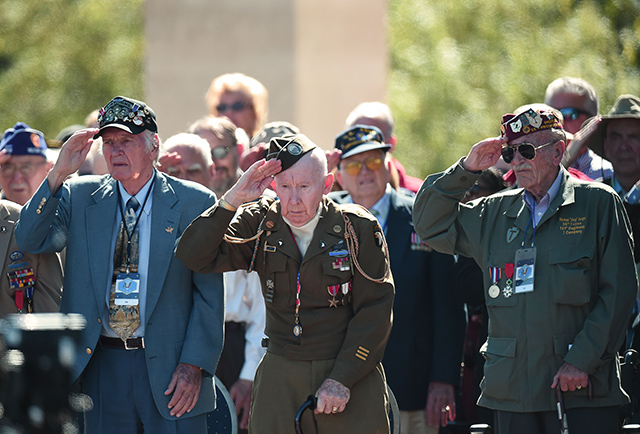
The northern district of Normandy in France is preparing to honour and commemorate the veterans and soldiers who gave their lives during World War Two.
The D-Day landings took place on 6th June 1944. It was the beginning of the liberation of France as thousands of Allied troops stormed the beaches at Normandy against the Nazi German invaders.
Now, Normandy’s local authorities have been honouring the veterans who took part in the landings with a commemorative 70th anniversary medal. The medal is to say a special thank you to all of those who took part in the operation and liberated France.
Joseph Stott from Utah is now 90 years old, and was just 19 when he landed at Omaha beach, has received the medal from French authorities. Joseph will join other veterans on an Honorary flight back to France this autumn with their families. They will visit the World War Two memorial in Normandy and take part in commemoration ceremonies.
Operation Neptune, as the beach landings were known and part of the overall Operation Overlord, was one of the biggest sea to land invasions in world history. The operation was the beginning of liberating France and the rest of Europe from Nazi Germany. It was the pinnacle to an attack that led all the way to Berlin and the fall of the Third Reich.
The operation was planned from 1943 onwards. There was a huge deception plan underway alongside the actual D-Day landings, so that the Germans would not suspect when and where the real attack was going to be made, the KSL.com reports.
Operation Bodyguard was the deception plan. In the lead up to D-Day the weather was not ideal, but if the Allies postponed they would have to wait another two weeks to allow for the phases of the moon. So military leaders decided to go ahead. Germany was anticipating an attack from the Allies, and Nazi Field Marshal Rommel had been put in charge of German troops in France, as well as ensuring coastal fortifications were suitable to fend off an Allied attack.
The first part of Operation Overlord was a huge air and sea attack onto the French mainland. Around 25,000 Allied paratroopers were dropped behind enemy lines during the night, followed by hundreds of divisions of land troops being shipped to the French coast early the next morning. Normandy’s beaches had been divided into five sections by Allied commanders, these were Utah, Omaha, Gold, Juno and Sword Beach. The entire section stretched 80kms of the French coastline.
There were strong winds and many landing craft were blown off position, so many troops landed under heavy enemy fire. The beaches were littered with mines and defence obstacles put there by the Germans.The most casualties were at Omaha beach since it has very high cliff faces from which the Germans could defend well. Only Juno and Gold beaches were taken by the Allies in the first day of the invasion. The other beaches were all take around six days later.
